
Sharks Are Fascinating, Not Fearsome
Sharks are among the world's most misunderstood creatures. Unlike the scary image of sharks portrayed in our movies and television shows, sharks are extremely fascinating animals. The world of sharks is also very diverse and each species is endowed with characteristics to inspire the awe. In this article, Jillian Morris, a marine biologist and shark conservationist, and the Founder and President of Sharks4Kids, tells us about her experience with sharks and why she is in love with them.

Why do sharks fascinate you?
I saw my first shark when I was 8 years old while snorkeling in Florida and I was hooked. How can you not be fascinated by an animal that has been around for over 400 million years? I learn something new every day about sharks, as do other scientists, with new species being discovered every year. Ultimately, we know very little about these animals, but we do know they are important for healthy oceans.
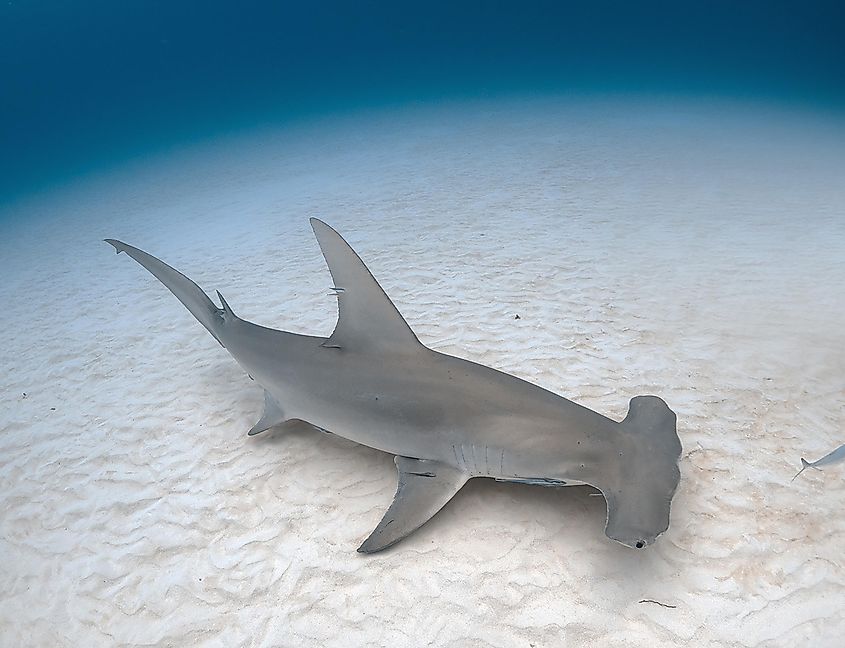
A great hammerhead shark.Image credit: Jillian Morris
How diverse is the world of sharks?
Incredibly diverse! There are over 500 different species of sharks ranging in size from 15 cm (6 inches) to 15 meters (49 feet). They come in different colors, shapes, and sizes. Not all of them have the true shark shape. They live in different habitats throughout the world's oceans as well.
Which is your favorite shark species and why?
The great hammerhead shark is my favorite animal on the planet. They are absolutely mesmerizing to watch. They are so unique and being in the water with them is not like anything else. I’ve had some really special moments with this species and feel lucky to spend time with them. Sadly, despite their amazing adaptions, this species is listed as Critically Endangered on the IUCN Red List.

What are some unique things sharks do?
Tiger sharks ( and other species) can actually invert ( throw up) their stomachs to get rid of items not easily digested. Sand tiger sharks swallow air to help with their buoyancy and then have to fart to release the air. There are also 9 species of ‘walking sharks’ who use their pectoral fins to walk rather than swim. Sharks are so cool!!!
What are some of the most intriguing shark facts that most people are unaware of?
Sharks can do some really amazing stuff!
- Lantern sharks and swell sharks can glow ( bioluminescence and biofluorescence).
- Bull sharks can swim in salt, brackish and freshwater.
- Lemon sharks give birth to live pups, which have a little shark ‘belly button’ when they are born. It is really an umbilical scar, but very cool.
- Prickly dogfish have dermal denticles large enough for our eyes to see. It is like they have a suit of armor protecting them.
You can learn more about some of these Shark Super Powers from my book ( https://www.sharks4kids.com/sharksuperpowers)
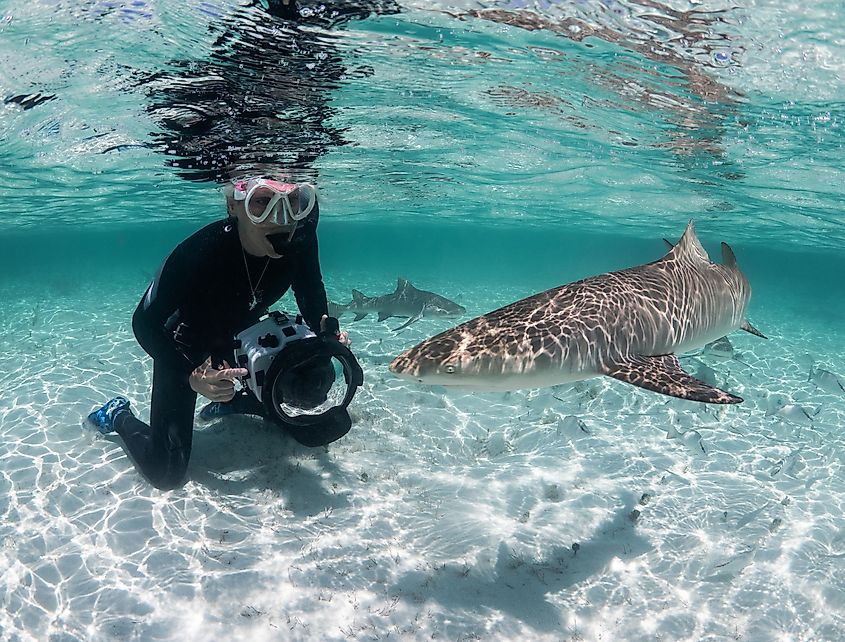
How does it feel to be up close to a shark?
I feel lucky anytime I am in the ocean and in their world. We are so fortunate to be able to spend even a moment with these creatures. To observe them and see them in the natural world is breathtaking. Making eye contact with a tiger shark remains one of the most beautiful things I’ve been able to experience. Their eyes are not cold and dark; they are connected to a soul. Looking at their eyes makes you realize there is so much more to these creatures than people give them credit for.
How do sharks react to the presence of humans around them?
It really depends on the situation. Around the world, there are provisioning sites where sharks are fed, and divers can watch them. They are intelligent animals and learn quickly in these situations. They know to come to the feeder or bait box and even know which direction to approach from in order to be fed. On these dives, the sharks are used to humans in the water.
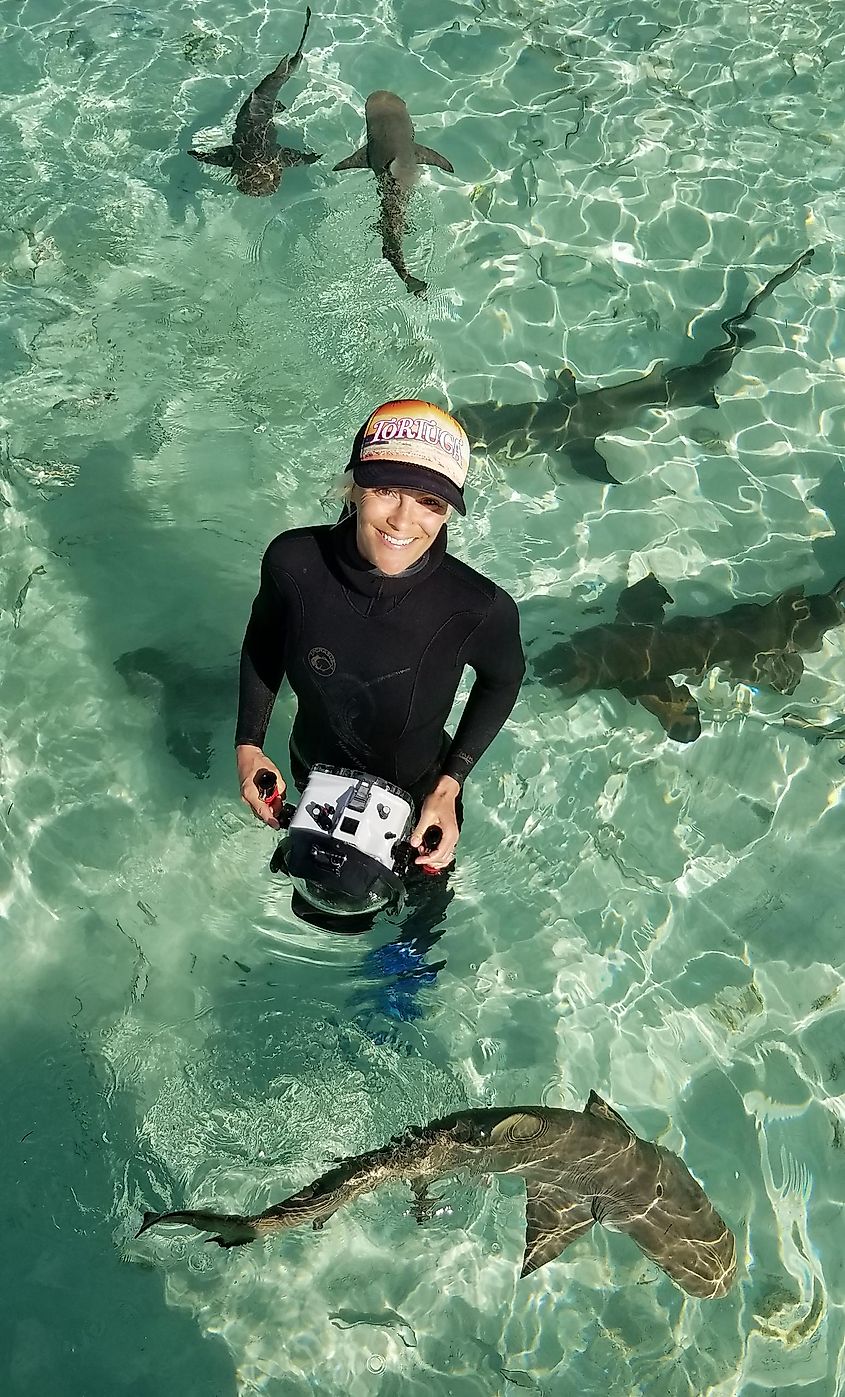
In other areas where this does not occur, sharks may have never encountered a human before. Like any animal, if they feel threatened, they can react. No matter where you are diving or snorkeling, it is always critical to remember they are wild animals and deserve our respect. There is no need to touch, ride or harass sharks. These human actions can have negative impacts like causing animals to leave an area earlier than they normally would or disturbing the protective mucous layer on some species.
Is it true that some shark species are more aggressive than others?
Again, it depends on the situation. I have spent a lot of time diving with different species and studying their behavior. Sharks cannot growl like a dog when their disposition changes. They can arch their back a bit and push their pectoral fins down. It is important to watch for these cues.
There are definitely species that can become more “agitated” than others. It is the reason why respecting these animals at all times is necessary for human and shark safety. Believe it or not, sharks can have unique personalities, which means certain individuals can have more bold temperaments.
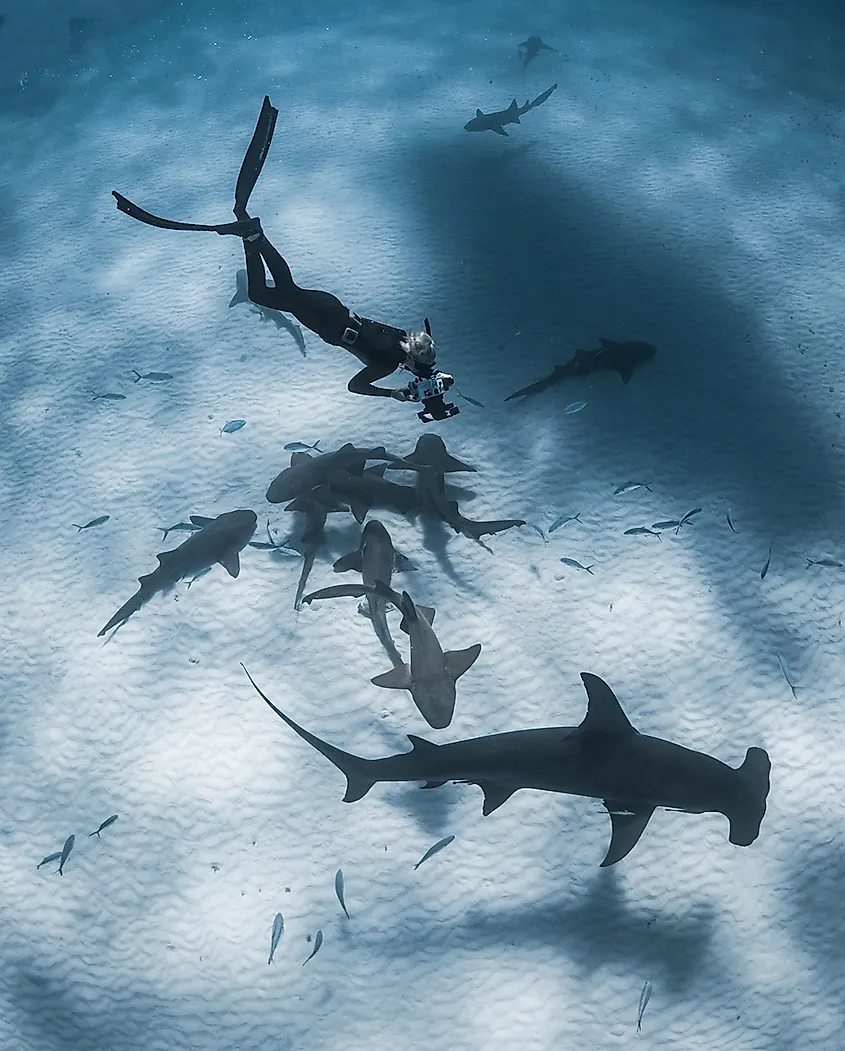
What are some of the common myths about sharks that people should stop believing?
They are not man-eating monsters. Yes, shark bites happen, but they are very rare. We are inundated with misinformation and fear when it comes from sharks. Even people who have never seen a shark are terrified because we are taught to fear them.
They are not mindless eating machines. Different species have very different diets. Their teeth come in different sizes and shapes depending on what they eat and how they eat it. They do not eat every day and do not eat everything that crosses their path.
What are things you should avoid while diving with sharks?
- First off, you must remember they are wild animals and respect them at all times.
- Do not try and grab, pet, or ride sharks (or any wildlife).
- When selecting a diver operator, make sure they reputable and focus on human safety as well as shark safety.
- I also recommend finding an operator who supports conservation, science, and education.
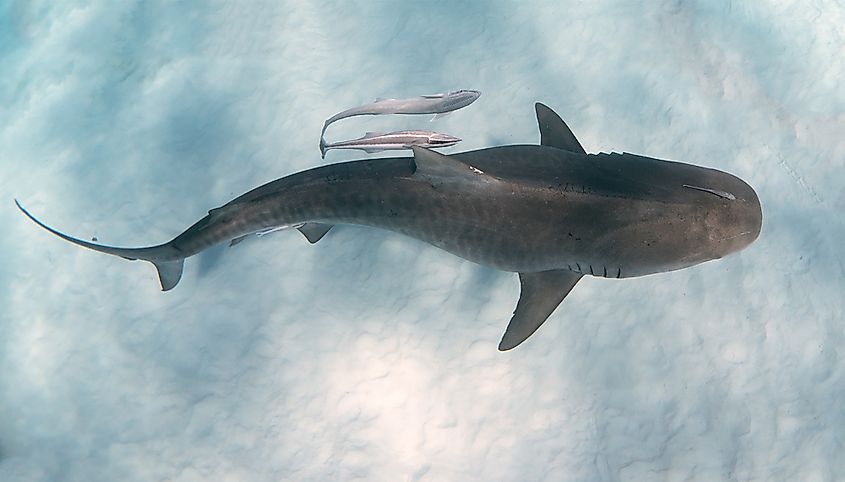
What have sharks taught you?
They have taught me to be in the moment and immerse myself in the quiet beauty of the ocean. The world is busy, but when we are underwater with sharks, there are no deadlines, no emails, no demands. It is just Mother Nature and us.
It is cliche, but to not judge a book by its cover. Sharks are often misunderstood and judged on myths versus reality.
They have also taught me to follow my passion. Work hard and stay true to your dreams.
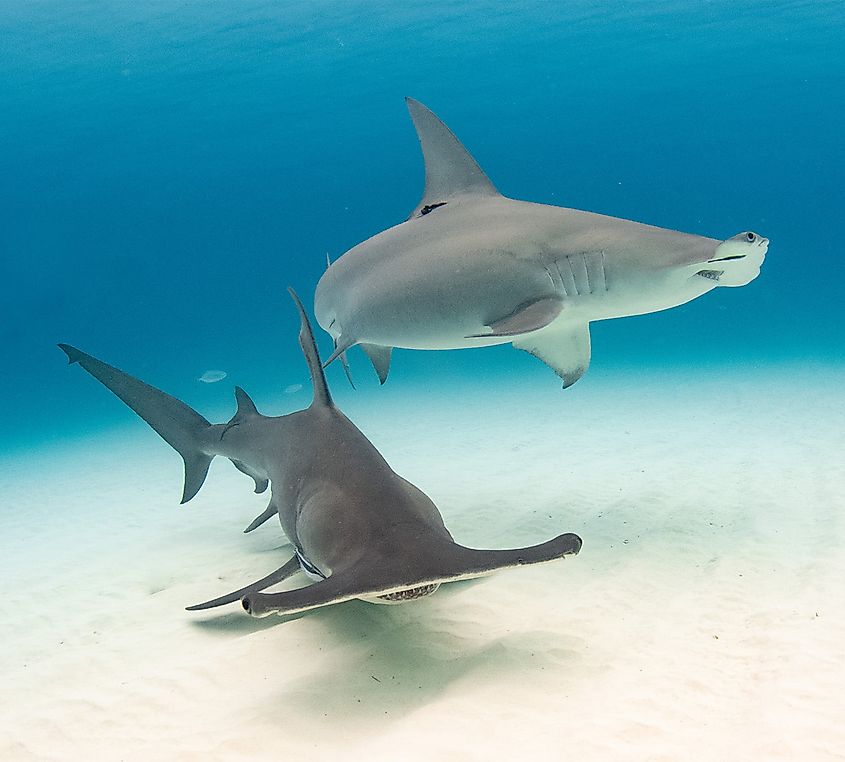
What is your message for our readers?
Sharks need our help! Humans kill 100 million sharks each year for fins, meat, and liver oil. They are also caught as bycatch and targeted for sport.
Sharks play a critical role in our oceans. They balance the ecosystems by maintaining prey populations and distribution. We need to replace fear with facts and take action to protect sharks and the oceans.
Things you can do:
- Educate yourself about sharks and spread the facts to others.
- Use less plastic and avoid shark products.
- Support shark science and conservation work.











